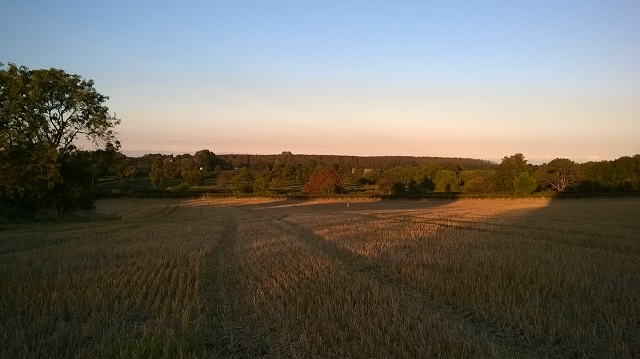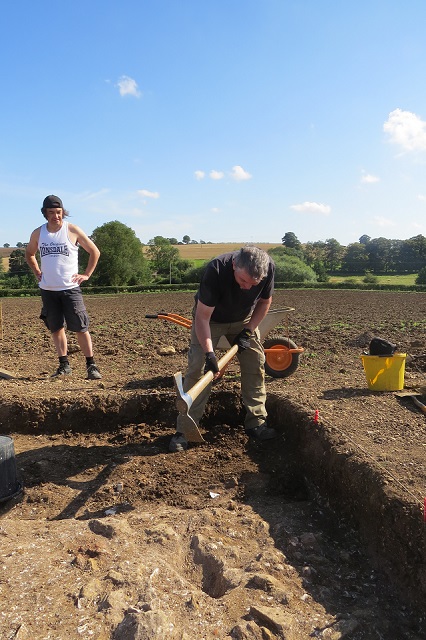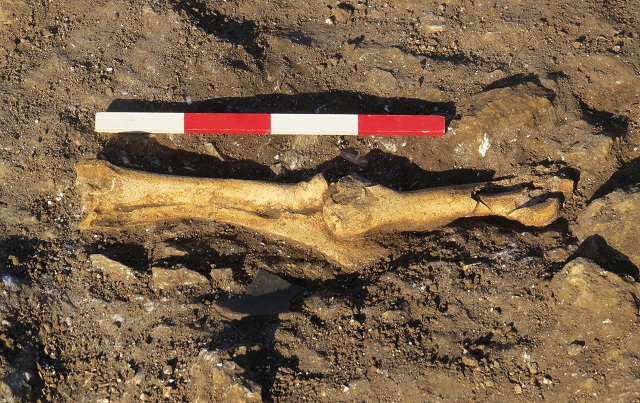Antonia writes: “On the Roman site at Hatcliffe my colleagues and I were given the opportunity to participate in doing a geophysical survey of two areas of the site. These were to the north and west of the field in which the main part of the Roman site lies (that was known about from the excavations last year, posted on last year’s blog and an earlier geophysical survey commissioned by Dr Steve Willis). Our aim over the past two days has been to see if the site continues beyond the known area.
Using a variety of University of Kent equipment varying from tripods and controllers such as GPS to data loggers and staffs with prisms on top, we were able to pin-point the coordinates for the grid we would use in the survey. Once we had mapped out our 30m by 30m grids which proved to be straight forward (once you understood the equipment), we were able to move on to using the ‘magnetometer’ which measures the magnetic properties of the ground below and the air above the machine. I was very impressed by the machine as I had very little knowledge of the device as a whole and geophysical survey also, but now I am learning ‘in the field’ as part of my undergraduate degree. The University of Kent Archaeological Technician, Lloyd, oversaw the setting up and suggested we used the method known as ‘zig-zag’ when using the magnetometer, which proved to be effective as this allowed us to cover a larger area more rapidly than if we had used the other approach available to us known as ‘parallel method’.
These two survey areas at Hatclliffe are long strips of grassland. One a paddock area above the stream (Waithe Beck) that runs by our Roman site at Hatcliffe, and the other a strip of meadow grassland by a plantation wood. Once we had finished the surveying we were able to look at the results by downloading the data to a laptop. The paddock area results showed that underneath the soil some of the main ditches of the site (around which the Roman settlement was organized) continue but not beyond the point where the land falls away to the beck. The meadow area had an arcing anomaly which is thought likely to be a Roman or prehistoric ditch similar to others detected in the main field close-by. This appears to be at the fringe of the site so our surveying showed that the site is indeed mainly located in the field where the excavation trenches have been so far.
I thoroughly enjoyed participating in the geophysical surveying as it was a fascinating experience and was glad to learn the principles of the methods from our instructor, Lloyd, and how the results can be interpreted. I can add these details to my portfolio on the work we are undertaking at Hatcliffe and Brookenby this year”.
The dig team write: Back at Binbrook trowelling to define the archaeological layers and features in our Trench C showed that the whole surface area of the trench is archaeology (with no natural chalk showing through). This is unusual at a rural site as often archaeological layers and features are found to be separate, surviving as discrete features cut into natural subsoil. Steve said what we had here looked more like you would see with urban archaeology. We think this is because we are in what was a ‘busy area’ of the site by a building or buildings. We will see in the coming days. One highlight was that the cleaning revealed a surprising find lying in the top of a linear feature. These were the articulated leg bones of a very sturdy ox (see picture). The scale of the bones indicates this is not a cow of indigenous British breed but ‘improved’ stock of Roman date and quite likely to have been one of a pair of a team of oxen used for ploughing or cart haulage and transport. This will have been a valuable animal and an indication of standing. Our Roman site at Binbrook seems likely to have been a farm hence this seems to be a reasonable interpretation. There is so much building stone in the Trench and across the field that had been brought to the site from Roman quarries along the Wolds scarp about 8-10 miles away for the construction of this settlement that the animal may have had a role in the transportation, pulling a cart. Large and articulated bones are an unusual find on archaeological sites as more often butchery, marrow extraction, boiling down, dog chewing and scavenging are at work leaving only fragments for diggers to uncover.




